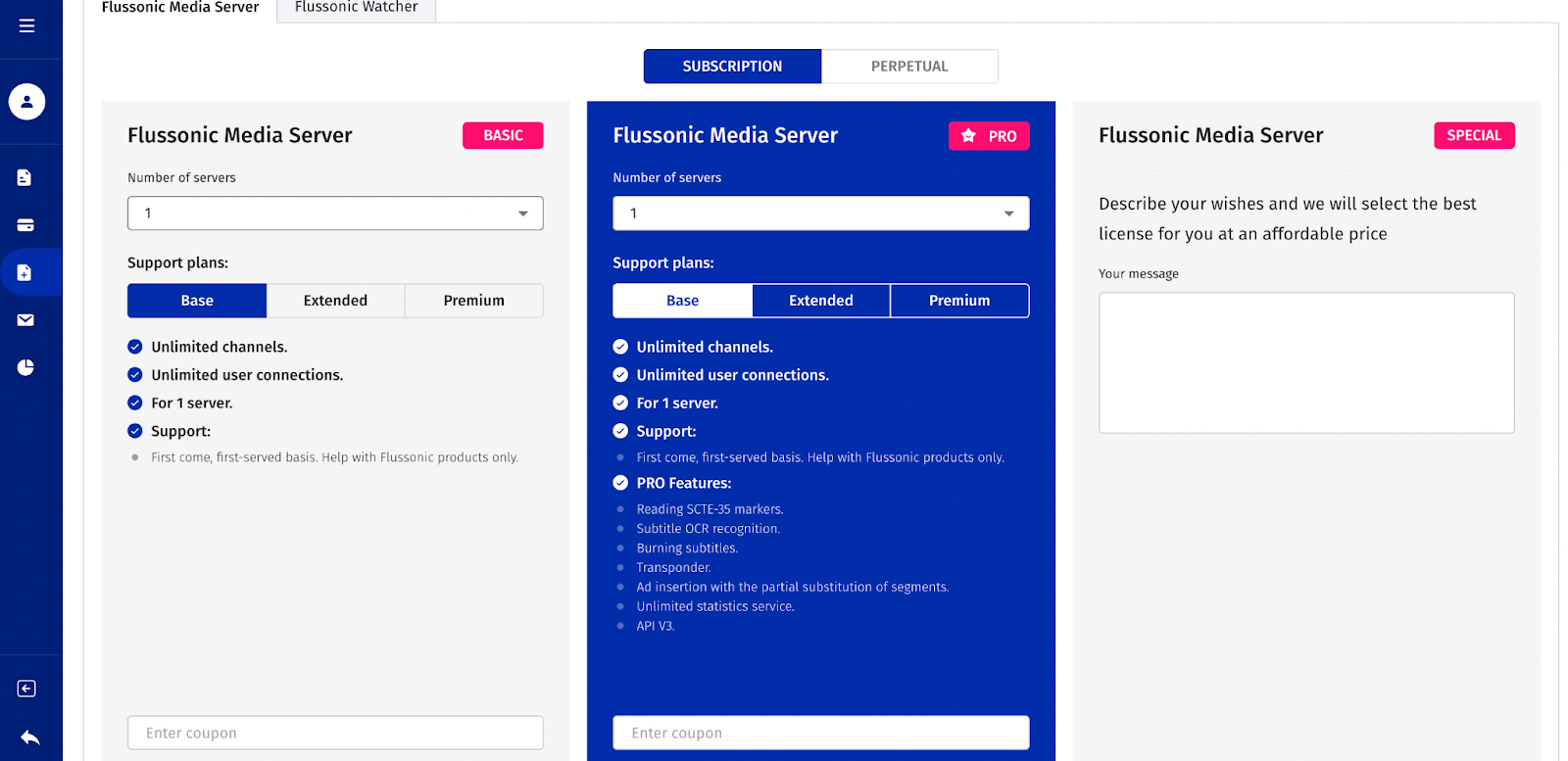23.01 Media Server
I am pleased to announce the release of the latest versions of Flussonic Media Server and Flussonic Watcher.
This new version, developed at the end of 2022 and released on the cusp of the new year, marks the start of 2023 and our ongoing dedication to continuous improvement and updates. Our goal is to provide our customers with the ability to offer their end-users a continuous, uninterrupted, high-quality service.
Although 2022 was a challenging year, we continued to roll out new features every month and we made exciting progress. We implemented AV1 and WebRTC ABR, started working with K8S, and made Flussonic available as a Cloud Service. Our team also made significant strides in video analytics. We have streamlined and made the video surveillance and video stream analysis services in Flussonic Watcher more cost-effective.
We are not slowing down in the new year. The 23.01 release includes AV1 encoding in Media Server, optimized collection of event logs, new redundancy feature for multicast push, load balancing mechanism for WebRTC, and much more. We focused on the stability of our products, so that the dev teams of our clients focused on developing new services for their end users.
I would like to extend a heartfelt thank you to our customers who have provided valuable feedback and played a vital role in the continuous improvement of our products.
We invite new clients to join our community and encourage you to try out our products for yourself with a trial version of Flussonic or a trial account of Flussonic Cloud. Don’t miss this opportunity to experience the benefits of our products firsthand.
Sincerely, Max Lapshin Founder and CTO, Flussonic
What’s new in the Flussonic Media Server 23.01
Transcoder
Support for AV1 encoding on NVIDIA Nvenc. Flussonic Media Server version 23.01 now supports the latest NVIDIA Media SDK and enables users to take advantage of the new encoding capabilities of the latest generation of NVIDIA GPU, Ada Lovelace. This is in contrast to previous generations of NVIDIA graphics chips, which only supported decoding of AV1 video. With this update, the Flussonic transcoder now supports both decoding and encoding of AV1 video, allowing users to utilize the latest hardware capabilities and efficiently encode AV1 video.
Support
Optimized logging and debugging. In the latest release, we have streamlined log collection by eliminating excessive RTMP messages and enhanced event messages collection through the API V3. This has significantly shortened the time needed to locate relevant information in the logs and improved troubleshooting efforts. As a result, we are able to offer faster responses on support tickets.
Erlang 25
Flussonic is now shipped with the latest version of Erlang 25, which optimizes CPU resources on the ARM architecture. This update is also important for the stability and security of our customers.
Flussonic Redundancy Scheme for Multicast Video Streaming
The new version of Flussonic offers a new redundancy option to ensure continuous video streaming on a multicast network. The primary server is responsible for pushing video data to the network, while the backup server constantly monitors the multicast network for the presence of the video stream. If the backup server detects that the primary server has stopped pushing the video data, it assumes that the primary server is down and takes over the responsibilities of the primary server by starting to push the same video stream to the multicast network. This helps to minimize downtime and ensure continuous video streaming.
WebRTC
In the middle of 2022, we incorporated support for the WHIP/WHAP protocols for the distribution and playback of WebRTC streams. At the time, we stated that it would soon be possible to utilize these protocols to achieve load balancing for both the ingress and egress of WebRTC streams. With the latest release, we are proud to announce that load balancing for both ingress and egress is now a reality.
New User Interface
We are constantly working on a new user interface which is more intuitive, mobile-ready and gives direct access to the cloud and retroview analytics. We will be supporting both the new and the current user interfaces until the new one incorporates all critical functions of the current UI and all the advantages of the new one.

Documentation
We have updated information on support and reading ad insertion tags (SCTE35). We described new ways to configure config_external both through the config file and using the API. We also added important documentation on canvas options to publish video via WebRTC (chats, filters, masks - directly right from the browser).